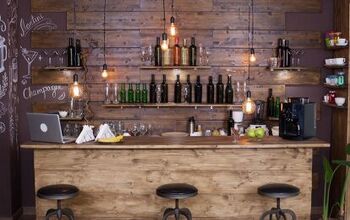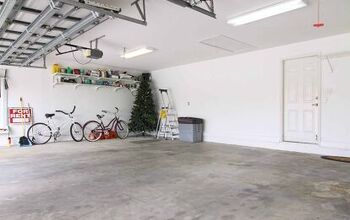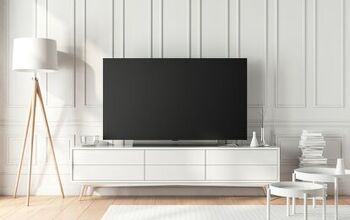Interior Design Tips For First-Time Homeowners

Buying your first house is a huge milestone, and it comes with plenty of emotions, like excitement and sometimes panic. Now you have a house (woo-hoo!), but what’s next? A house is just a building, it’s up to you to make it a home. Interior design is a big part of the process, but you want to take it slow when you’re designing as a first-time homeowner.
Make a plan and concentrate on form first. Use a cohesive color palette, and opt for neutrals for larger pieces, so you can invest in pieces that will last. Introduce bolder colors through smaller items and accessories that you can change more frequently. Layer different textures and make lighting a priority, and don’t forget to add a few personal touches.
In this article, we’ll look at a few interior design tips and tricks for first-time homeowners. Use these tips to create a comfortable, functional home and avoid potentially costly mistakes that could trigger buyer’s remorse.
You Need A Plan, Don’t Wing It
When you’re furnishing and decorating your first house, it’s undeniably super exciting. You want to fill your cart with all sorts of fun odds and ends, and you think you need every toolkit for all those cool DIY projects you’re planning. But hold on just a minute.
You don’t want to wing it when it comes to designing your home. You’ll likely end up wasting money and making decisions you’ll regret later. To save yourself a lot of headaches, wasted dollars, and lost time, make a plan.
Assess your space, take measurements, consider things like angles, windows, entry and exit points, and how you plan to use each room. Think about your lifestyle, because you want your design to support how you work and live each day.
Start gathering ideas through various inspirational sources and create a mood board that helps you put all of your inspo in one place. When designing a room, draw a floor plan, preferably with measurements to scale. This is a valuable tool to help you test out different sizes of furniture and layouts before committing.
Form Follows Function
How something looks in your home is important, but how it functions is vital. Blending form and function is a key design rule, and function should take the lead.
The tendency for eager first-time homeowners is to buy based on looks, and you end up with something that doesn’t fit your life (or your living room). For example, you find a big, beautiful, trendy couch that you know will make your living room perfect. You buy it and bring it home. You love it until you get a call that your family wants to come stay with you, and you realize you have nowhere for them to sleep.
Your home has no guest bedroom, and a sleeper sofa would have been so much better for maximizing your space. Or maybe you’re regretting the open shelves you put in because you remember how much you hate to dust.
These examples only scratch the surface of why you need to think about function before aesthetics. Consider the flow of your spaces, so you can make sure to maximize how you maneuver in them. Pick pieces that make life easier and give you some breathing room.
Choose A Cohesive Color Palette
Choosing a cohesive color palette is sound design advice for everyone, but it’s especially helpful for first-time homeowners. Since you’re starting out, you can mix-and-match pieces from different parts of your house to change things up without buying new items. Pieces in one space will work equally well (or better) in others, since they share the same palette.
Also, similar hues throughout your home make it easier to create a design that feels balanced and flows well from room to room. A color wheel can help you put together a palette that makes sense. It shows you which colors work well together to create the look you’re going for, whether it’s calming, energetic, or moody.
A good formula for building your color scheme is the 60-30-10 design rule. Fill 60 percent of your home with the color you choose as your dominant color. Devote 30 percent to a secondary color (a neutral is a good pick for this one), and then add an accent in the final 10 percent.
No matter what colors you consider, test them in your spaces first using samples. Paint large samples on pieces of poster board that you can move around to see how the colors look in multiple parts of a room. It’s also a good idea to see how the colors react to different lighting and how they look during the day and at night.
Invest In Essential Pieces, Save On The Trends
When you have your first house, it’s more likely that it’s a starter home, and you’ll have other houses in your future. Therefore, invest in essential, larger pieces, like your mattress, couch, or dining table. Stick with neutrals, so they’ll fit into whatever color palette you end up using.
These pieces will likely still be around when you move to a new place. But even if you’re staying put, these large items usually cost more, so going with colors that go with anything is a wise choice.
On the flip side, when it comes to trendier pieces or seasonal decor that you’re more likely to change up often, save. Look for sales, discounts, or bespoke items that can add a statement without draining your wallet.
Add A Designer Touch With Layers And Texture
Give your home a designer look by layering textures and thinking in terms of opposites to mix things up. You don’t want everything to fall flat and be one-note.
Some suggestions are things like a plush wool rug, a rattan chair with a cushy velvet pillow, and a pair of linen sheers. Mix natural materials like cotton, jute, and wood with synthetics to maintain a sense of warmth and coziness. Balance square edges with curved lines, solids with patterns, and hard surfaces with soft materials.
Make Lighting A Part Of Your Design Plan
Lighting needs to be a part of your design plan from the beginning. You aren’t stuck with whatever basic ceiling light came with your house. You can swap it out for a statement fixture, add wall sconces, a cool floor lamp, etc.
Layer ambient, task, and accent lighting to give your space the functional light it needs and also create the appropriate mood. Smart bulbs are an easy way to change up the colors and intensity of lights. Being able to dim lights when you want to create a cozy glow makes a big difference in how your home functions and feels.
Design Mistakes To Avoid As A First-Time Homeowner
The above tips are pointers to get you moving in the right direction. But you also need to know what mistakes to look out for, because there are a few common first-time homeowner pitfalls regarding design.
1. Don’t Rush The Design
The best thing you can do when you’re designing your first home is to be patient. Go slow, because you’re almost sure to change your mind. When you first move in, you’re still in the honeymoon house phase, where everything is exciting and fun and perfect.
But if you rush to buy everything at once, you’ll realize after living in the home for a while, you need or want something different. Instead, get a few basics, and live in your home for a few months to see how you utilize the space.
You may discover that rooms you assumed would function one way, you end up using for something else. For example, you plan to use the spare bedroom as a home office, but find after a few months that you inevitably end up doing work in your sunny breakfast nook.
Waiting for this realization will save you from buying a bunch of office furniture you don’t need. You’ll also likely start having a clearer idea of what that spare bedroom really needs to be. (Like a guest room or a craft space for your overflowing crochet habit.)
2. Everything Doesn’t Have To Match
Skip the furniture sets in the showroom. Sure, it makes things easy, but it’s boring. Take your time and add pieces slowly over time to curate a look that’s uniquely you. When everything isn’t so matchy-matchy, it has a more elevated look.
3. Don’t Ignore Proportion
If you have low ceilings, don’t get tall furniture. On the other hand, if you have 12-foot ceilings, don’t get a short bookshelf or a low-profile bed.
Scale and proportion are important in creating a space that looks balanced. If furniture is too tall for a room, it looks too crowded and cluttered. But if you get pieces that are too small, a space can feel empty, lifeless, and forgotten.
Also, consider the sizes of pieces in relation to each other and their placement in the room. Things don't need to match, but the overall visual scheme should look and feel balanced.
4. Skimping On Storage
Don’t underestimate good storage. If you don’t have enough space to put things, your home becomes cluttered and doesn’t look its best. It also becomes less functional.
Therefore, make sure to include organization, along with a few closed storage options, in your overall design plan. The closed storage is important because you don’t want all of your stuff on display.
Remember, function before form, so make sure you have enough storage before you pick furniture pieces. If your room is significantly lacking in places to put things, opt for furniture that includes storage.
Make Your First House The Perfect Home
Add personal touches to your home to infuse your design with your unique style. A statement piece of art, a quirky chair, or a vintage trunk as a coffee table are all excellent options if they fit your personality.
Keep colors cohesive, make a plan, light it right, and don’t forget about storage. Following a few simple tips and avoiding common mistakes helps you create a home that’s welcoming, beautiful, and yours.
Related Guides:
- Home Design Choices For Reducing Stress
- 13 Easy Ways To Make Your Kitchen Look Bigger
- How To Increase Natural Light At Home

Stacy Randall is a wife, mother, and freelance writer from NOLA that has always had a love for DIY projects, home organization, and making spaces beautiful. Together with her husband, she has been spending the last several years lovingly renovating her grandparent's former home, making it their own and learning a lot about life along the way.
More by Stacy Randall












![Finishing Basement Without Permit [Is It Really Illegal?]](https://cdn-fastly.upgradedhome.com/media/2023/07/31/9070078/finishing-basement-without-permit-is-it-really-illegal.jpg?size=350x220)
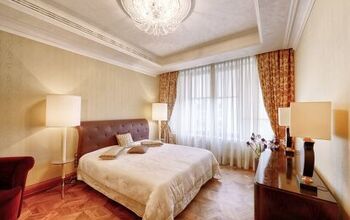
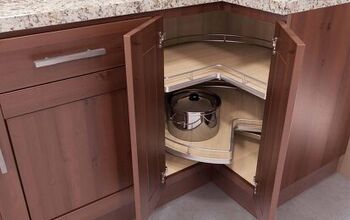
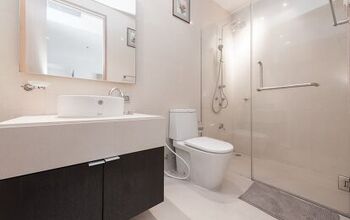
![10 Most Dangerous Neighborhoods in Baltimore [Updated]](https://cdn-fastly.upgradedhome.com/media/2023/07/31/9075655/10-most-dangerous-neighborhoods-in-baltimore-updated.jpg?size=350x220)

